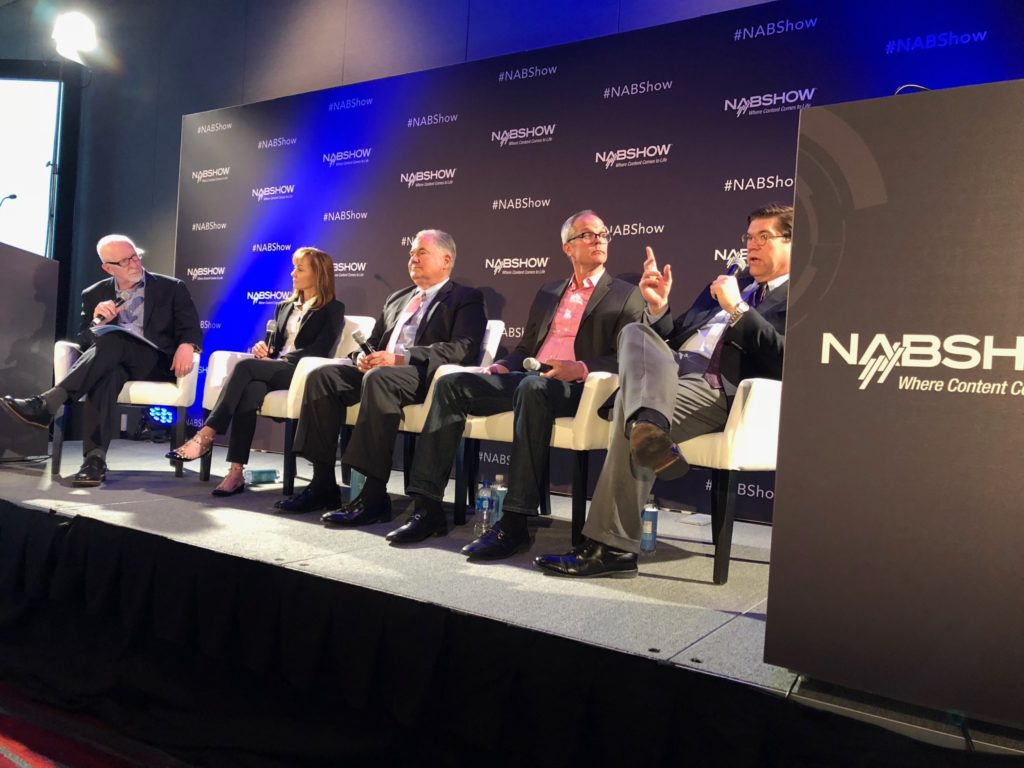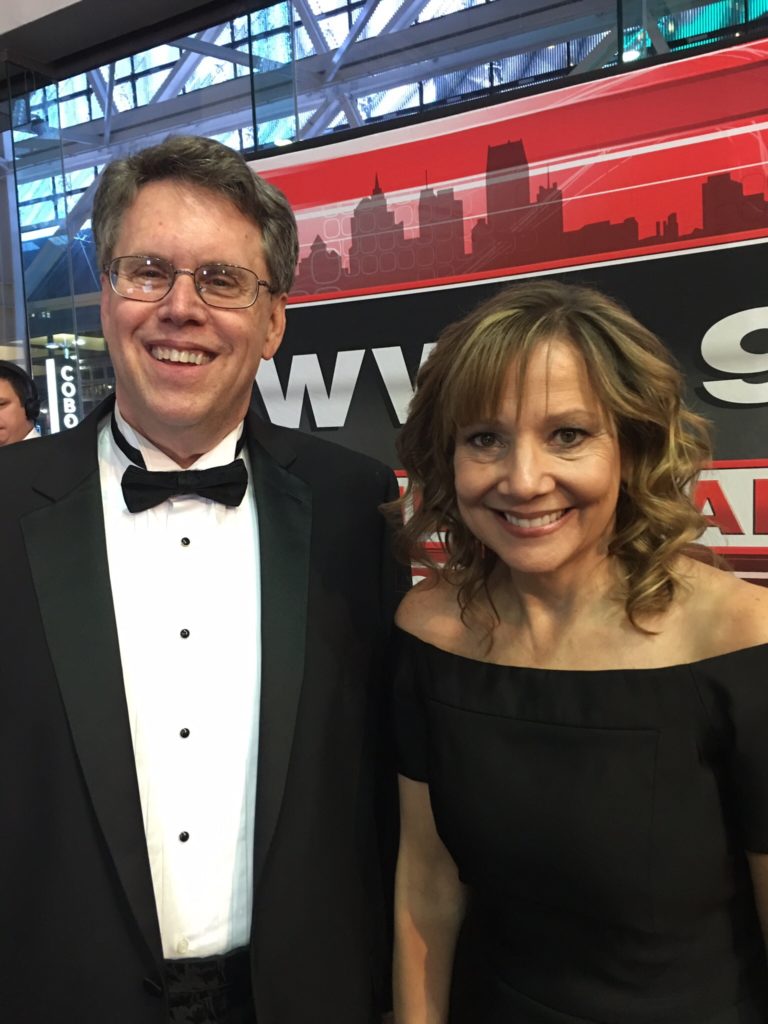
Another NAB is in the books. If you’ve been in Las Vegas this week, you probably noticed some differences between this year’s big broadcasting soiree and those of the past.
I was fortunate to moderate a super panel on Wednesday – loaded with thoughtful radio broadcast executives who offered an insightful look at the changing industry. It was called “Fast Track to the Future,” an easy topic to tackle, right?
We covered a lot of ground in 80 minutes, from the personal backstories of each exec, to wide-open discussions covering attribution, Alexa, “connected cars,” and radio’s “secret sauce.” But we also talked what it means to be a radio executive in 2018 – the pressure to make the right calls at the most opportune time.
The underlying vibe among the panel was one of calculated urgency. In their own way, each broadcast leader made it clear they were tasked with making smart decisions, but often on the fly. That John Wooden adage, “Be quick, but don’t hurry,” echoed in my mind as I listened to their responses.
Caroline Beasley, Bill Hendrich, Tim Murphy, and Steve Newberry all may have differing points of view about the industry and where it’s headed. But the one thing that stood out was their collective realization that broadcast radio is at a crossroads. As Caroline stated, “The decisions we’re making today will impact what we’re doing five or ten years from now.”
And thus the need to move quickly, strategically, and soundly with as little interference and friction as possible.
One change at the NAB this year was the growing presence of automotive execs – OEMs, engineers, marketers, as well as other companies in and around the space with a growing stake in the radio industry. A word search at the NAB this year would have revealed the most uttered word was DATA. Whether a broadcaster, a technologist, or an automaker, it is all about the data – who owns it and how to deploy it.
The automotive and radio industries have a great deal in common besides their obvious historic connection. That was something we immediately picked up on at all three of our DASH conferences. And it’s even more the case today.
Car makers are being profoundly disrupted – by Apple and Google, and now Amazon, as Alexa’s voice is being embedded into the dashboard. Her companion will be Amazon Prime, their conduit to shopping that synergizes as well with cars as it does with Whole Foods. Automakers are also feeling the coming effects of autonomous cars and shared mobility, both of which are just around the corner.
And don’t forget how two of the biggest car companies in America came out of bankruptcy, experiencing success a decade after the Great Recession. That backstory should sound pretty familiar to radio execs, too, especially giving the events of the past year.
One of the auto industry’s leaders – GM CEO Mary Barra – has been tasked with helping her company continue its post-bankruptcy recovery. Perhaps of all the automakers, General Motors has been steeped in its own tradition, often to its detriment.

It’s one thing to turn a business around – it’s another to transform a heritage company’s culture. Many radio broadcasters are well aware of the magnitude of this task, as several of them are ensconced in a similar mission.
So when I read how Barra tackled GM’s 10 page dress code recently, I thought of radio executives who similarly want to keep their companies moving quickly, efficiently, and focus on the right things.
The story in Quartz At Work by Leah Fessler details Barra’s rise inside GM, starting out as a teen aged factory-floor inspector, working her way all the way up to the corner office today. Something as superficial as the dress code may seem like a trivial matter to most people, but to a company of this size and magnitude with a full-blown HR department, this is serious stuff.
Barra once headed up Human Resources at GM, so she understands both the history and the mindset. But she also has that same urgent need to get things done and move her company along during turbulent times.
And so when she thought about revamping the company dress code, it came down to this – two words:
Dress Appropriately
That’s it. No rules, sub-rules, sub-paragraphs, exceptions, caveats, or mentions of codes, penalties, or definitions. And as you might imagine, Barra faced pushback from HR as well as from a member of her senior leadership team, some of whom were looking for more specifics – just like in the old days.
Barra suggested this manager speak to his team and work it out with them. Once that happened, of course, the dress issues were put to rest, and the team acknowledged what those two words meant to them, their department, and their business contacts and events.
For Barra, it was a way to streamline the rules, keep employees focused on the true task at hand, as well as this revelation:
“What I realized is that you really need to make sure your managers are empowered – because if they cannot handle ‘dress appropriately,’ what other decisions can they handle?”
That level of empowerment for managers and all employees is part of this new paradigm to stay on task, get things done, and not get hung up on those time-sucks at the margins.
In today’s upside-down world of radio broadcasting, companies need to move even more quickly with intelligence through the maze of decisions and strategic calls.
A two-word dress code for one of the world’s largest companies?
I’m thinking my NAB panel is applauding.
- Like A Pair Of Old Jeans - April 2, 2025
- What’s Fair Is Fair - April 1, 2025
- What’s On Your Bucket List? - March 31, 2025




She makes a great point:
“What I realized is that you really need to make sure your managers are empowered – because if they cannot handle ‘dress appropriately,’ what other decisions can they handle?“
It jumped off the page to me, too, Marylee. I think all those years at GM in “non-corporate” jobs taught her about the mindset of employees. Thanks for chiming in.